
Have you ever looked into buying any kind of thermal imaging device? They’re not cheap. I was stunned that Holosun was producing the DRS with thermal capability for less than two grand. Any see-in-the-dark technology can be tough to get into, but every so often, you find something that surprises you.
The people from Xinfared contacted me and asked if I wanted to test their T2 Pro Thermal Camera. After a quick look at the website, I figured…why not?
Admittedly, my hopes weren’t high. A $400 thermal camera doesn’t inspire a lot of confidence. I’ve seen some micro-sized ‘budget’ options, and they’ve never been particularly great. The T2 Pro attaches to your cell phone via a USB-C port if you get the Android model, and it seems they have an Apple option as well. It can plug directly into your phone, or it comes with two extension cables that allow it to be mounted to a handheld device.
The T2 Pro has a resolution of 256 x 192. It’s not super low, but it’s also far from HD. However, for the price point, I was really surprised it wasn’t a 160 x 120. The T2 Pro Thermal camera pops right onto your phone, and you are required to download the Xinfared app. Once the camera is in, it fires right up, and you’re ready to rock and roll.
First Impressions
My T2 Pro was packaged in a quasi-hard case inside of another smaller quasi-hard case. In the large main case, there’s a grip adapter with a cell phone bracket for mounting and two camera brackets.
One is very basic, and the other is a protective box with a section of Picatinny rail above the top. The second box offers more protection, and you could mount an IR laser or visual laser to mark what you’re looking at to other viewers.
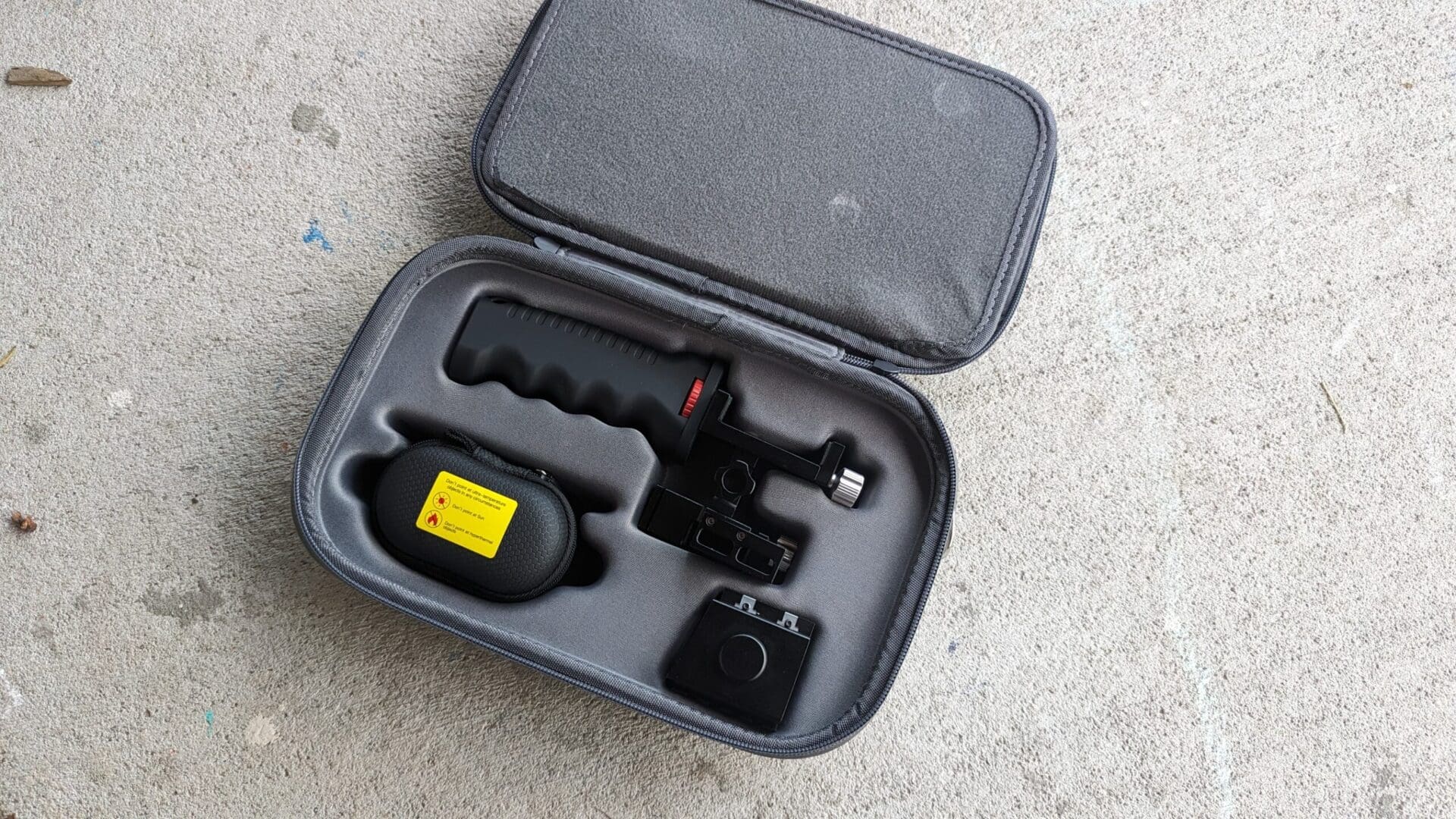
When mounted in the handheld grip, you’ll need to use one of the extenders to wire the camera to your phone. I also discovered that the camera doesn’t work with my phone case. I have to remove the case to mount the camera.
Instead, I mostly just used it with the bracket and extension. Overall, the package is quite nicely designed and well made. The fitted case was a nice touch and it provides excellent protection for your goodies.
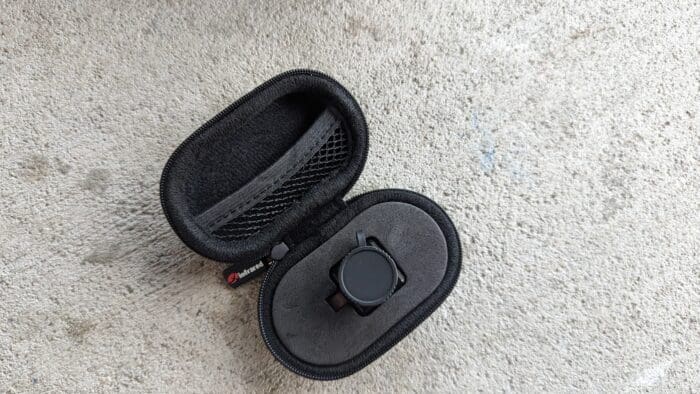
The T2 Pro stays tiny by relying on your phone battery for power, so battery life more or less depends on your phone’s battery life. It doesn’t necessarily suck battery power, but it will cause it to drain faster. Connection and setup weren’t a challenge, and it fired right up.
Putting the T2 Pro In Action
What’s the purpose of a thermal camera that attaches to your phone? That’s a reasonable question, especially for a website dedicated mostly to firearms. I’d recently gone through a serious hurricane and relied on a gas-powered generator for ten days. Looting had occurred, sadly, and security was paramount.
A tool like this makes it easy to scan through the dark without alerting any trespassers and would be thieves to your location. I live in a secluded area with large fields in most directions, and the T2 Pro would give me better situational awareness of the areas around me.
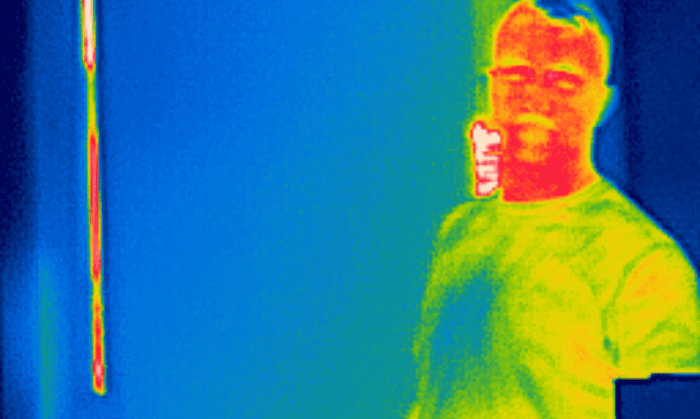
Outside of hurricanes and gas-stealing looters, I can capture and see wildlife that I wouldn’t have seen any other way. That can be fun because seeing deer moving under a full moon is cool, but it can also allow me to deal with and find hogs, which are destructive pests that need to find a bullet at every oppotunity.
Speaking of animals, tools like this can be handy for hunting and scouting game. It’s much cheaper than most thermal units and you can use it to scout prior to the season opening. These things work during day or night. Being able to see heat signatures makes it easy to see through thin brush and makes it quicker to scan than using the naked eye.
Through the Looking Lens
Connecting and firing up the camera is quite easy. Once you have the system on, your phone and Xinfared app act as your controls. You can zoom in and out with a digital zoom up to 15X. The T2 Pro has a fixed 2X magnification at all times. The 2X was never an issue, especially outdoors; it’s enough to boost your view without being too much for close-range heat signatures.
As with any digital zoom, the more you zoom in, the less resolution you have. You’ll lose some clarity with a zoomed-in image and it begins to look more blob-like.
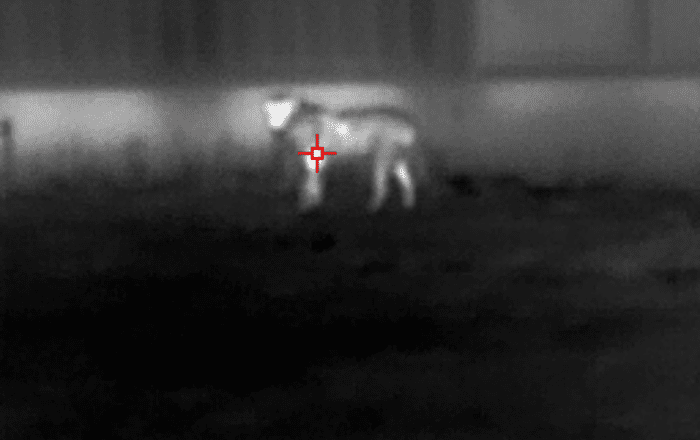
Phone screens can be awfully bright, right? There’s a ninja mode that the user can press, and the screen will instantly swap to being as dim as possible. This prevents you from being self-illuminated too much and keeps you mostly in the dark.
The T2 Pro provides several image modes that include black hot, white hot, and the old school Predator-style vision. We have orange and purple and a black-and-white mode that uses red and white to identify hot spots. The red portions identify the hottest posts of a hot spot. I prefer the white-hot mode, personally, but options are nice.

There’s a hot spot tracking mode where a small red box appears over a hot spot. That will track the hot spot across the screen if the hot spot starts moving. Playing fetch with a feisty dog showed how well that system works. As long as you can keep the moving hot spot on the screen, the tracking can follow it.
At Range
At 100 yards, I was pretty shocked that I could easily make out the form of a person with the T2 Pro. Not just a tall blob, but I could distinguish arms and legs. At 200 yards, I had no problems seeing two- and four-legged creatures and identifying the difference between the two based on height. Beyond 100 yards the heat signature starts to morph into blobs. The field of view is fairly wide, and Xinfared reports it as 13.6 degrees.
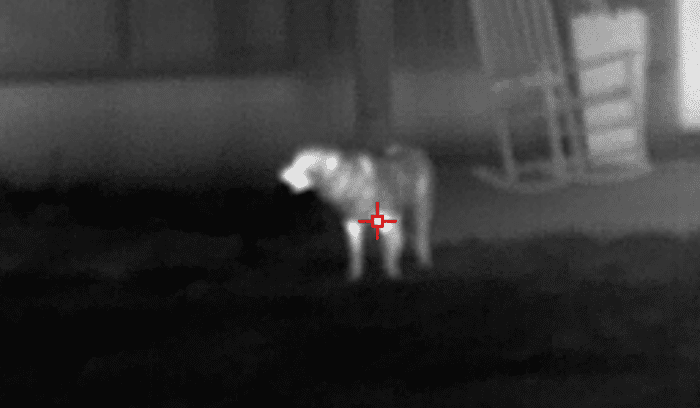
There is some lag, but it isn’t noticeable unless you’re looking for it. If you stay still or move the phone at a reasonable speed, it works fine. I had no lag when I used it to follow my dog fetching a tennis ball. I have a fairly new phone, and I’m betting the lag might increase with older phones with less power. On the Google Pixel 7 Pro, it worked pretty well.
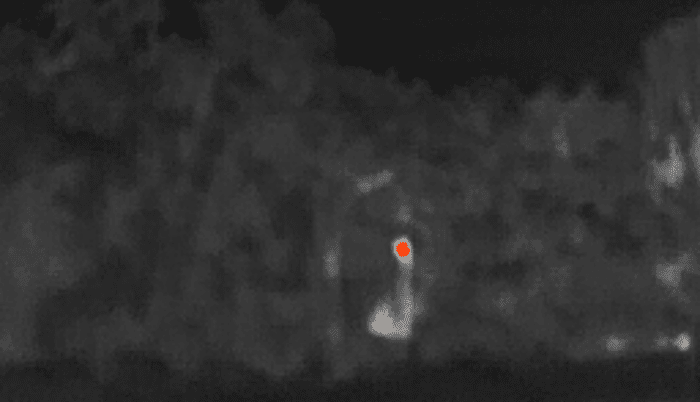
You can also take photos and videos while using the T2 Pro, making it fun to capture wildlife at night. It might seem silly, but watching raccoons and deer on the property is entertaining and relaxing. We see a side of nature that can be tough to see. I haven’t had to use it for any security concerns, but I can certainly see the value in being able to scan the darkness without firing up a flashlight.
The App
The app is very easy to use, and it’s all pretty self-explanatory. It crashed only once during normal use during all of my testing. I had a problem with the HD mode.
According to the manual, the Green Eye is the High Definition mode, which I could switch to easily enough. However, if I hit the HD button at the top of my screen, it closed the app. Not sure what that is about. The Red Eye has to be activated to track targets if you were wondering why you’d ever swap from high-definition mode.

Overall, the T2 Pro impressed me. It’s budget-friendly for thermal optics, and I really enjoy using it. It’s fun to observe things I can’t usually see. There’s a novelty to it that’s enjoyable, and the ease of setup and use makes it stress-free fun. Plus, there is some utility to an affordable thermal option for both hunting and home security. It most certainly doesn’t suck.




Ain’t seen a holosun DRS yet. It’s like a unicorn. Sounds real nice but ain’t seen it yet
“A tool like this makes it easy to scan through the dark without alerting any trespassers and would be thieves to your location.”
I would think a face lit up by a phone screen might give a slight clue to anybody approaching.
There are lower brightness levels for most phones in settings. Would I generally prefer a dedicated monocular design that takes batteries yes but I saw a similar idea years ago that was more money and had trouble going past 50 yards for object discernment so steps in the right direction.
SAFEupstateFML,
You can read my comments below for more details on currently available thermal imagers. They are VERY good.
If you are serious about considering a thermal imager, I recommend that you start your investigation with AGM Global Vision monoculars, specifically their Taipan TM10-256 thermal imaging monocular which is priced at $549 right now at a reputable online distributor. (While they make a lower resolution model at a lower price, I believe the lower resolution model is not very useful beyond perhaps 50 yards and not worth the price savings.)
Will have a look, not sure if it was the same model but was looking at something from that company right in that price range not long ago. Thank you.
Hillary’s Jockstrap,
I was coming here to share the same sentiment: a bright cell phone screen (even on its dimmest setting) will stick out like a neon-sign in a dark environment where a prowler is lurking. Last I checked, you generally don’t want prowlers to know where you are when you are searching for them.
This device appears to be a good solution if you want general ability to look for relatively warm objects in any lighting conditions (either bright or dark environments). If you are considering one of these for security purposes, I recommend a dedicated monocular instead. (A monocular with a soft silicone-rubber eyecup will seal virtually all light to your eye socket area and vastly reduce your visual/light signature in dark environments.)
They make rubber viewing hoods for camera monitors that can also fit on cell phones that would prevent this problem.
You could get a cheap VR headset and wear the phone that way.
In the last two weeks I was able to look through someone’s thermal imaging monocular. It was pretty amazing: I was able to INSTANTLY locate a cotton-tail rabbit hiding under a trailer about 40 yards away at night.
As I stated in my comment above, a monocular is the only way to go if stealth is a priority for you.
A couple tidbits regarding thermal imaging monoculars:
— A live human or mammal may blend-in to warm environments.
— Run time may be a LOT longer on a monocular versus a smart-phone add-on device.
— Determining how much resolution you need is somewhat confusing.
Regarding my comment above that determining resolution is confusing, it depends on several factors, the least of which is realistic expectations. Unless you are willing to spend something like $5000 or more, you are not going to get a high-definition (e.g. 1080p) imager. I researched this quite a bit and I believe that an imager with 256 x 192 pixels or 384 x 288 pixels resolution will satisfy 95% of people with realistic expectations and use cases.
Either imager resolution will work for most use cases as I stated. Note that the optical magnification factor will influence how well you can discern objects at any given distance. For example a 256 x 192 pixel imager with 2-times (2x) optical magnification will actually provide more object discernment than a 384 x 288 pixel imager with 1-times (1x) optical magnification. Why? Because the lower resolution imager has 2x optical magnification BEFORE thermal imaging. In other words the optical magnifcation before the thermal imager provides a significantly larger image to the imager which enables you to see greater detail than the same view in an imager with slightly greater resolution but significantly less optical magnification.
So, boiling it all down, I believe that a quality thermal monocular with 2x optical magnification and 256 x 192 pixels resolution will enable easy discernment of a human versus a four-legged mammal out to 200 yards. And you would get similar image detail in a quality thermal monocular with 1.5x optical magnification and 384 x 288 pixel resolution. The main difference in this comparison is that the next step up in resolution provides a bit wider field of view at basically the same level of target object image detail.
Bonus use for these is finding areas of heat/cold leaking from your house. I have an older FLIR mono we have used multiple times to identify areas requiring more insulation in my own and other people’s homes.
They are also really useful if you ever go boating at night.
Heard of that there is a nijia mode in the setting, which is for lowering down the phone screen brightness. Not have a try yet but my friend just had one, will check it out!
I’ve got the T2Pro. Have not used others to compare it to, but it works fairly well and the price was right. I like that it’s USB C and it’s pretty good resolution.
Only real negative I could say is every once in a while or kind of stutters and the picture freezes for a second before coming back. Minor annoyance but definitely not a deal breaker.
I would recommend the Xinfrared T2 Pro to people wanting to experience thermal imaging without spending a huge amount of money, and also to those who aren’t afraid of DIY projects
I’ve been interested in the topic of thermal imaging for a while and have had a lot of work done with thermals in observation related situations for a couple of years-days on end.
Since I’ve stopped working there my interest for thermal imaging didn’t go away.
I wanted to have a thermal camera/ sight for Airsoft and just for fun, well I bought my first device which is a T2 pro from Infiray, granted it doesn’t cost like the 300,000 dollar camera I used to handle previously- it still granted me the perspective of budget performance in the field.
Now I want to get into some serious tomfoolery with this device but I can’t find answers to a few questions.
Infiray take weeks to get back to their customers and I doubt they’ll want to answer me, but I will write them a message asap none the less.
My idea is to connect this camera to a drone (albeit the focus will be fixed) and use the TX pin on its USB-C output but I have no idea how to find it, say I would; this leaves me with the question of whether or not I HAVE to use android with it or how to go about doing so.
Can I just connect the USB-C’s TX directly to the data transmitter or is it not going to work/brick my device.
Open to more suggestions on how to go about connecting this camera to any non-android displays- would be cool to assemble a makeshift thermal sight out of it.
great review, I found it very helpful as I am currently looking into scanner and scope purchase, you covered off all the real world issues and situations for the device.
Comments are closed.